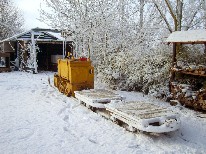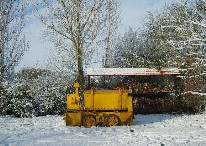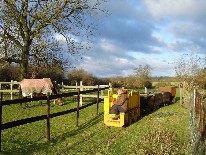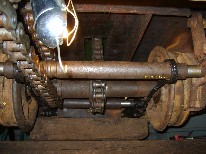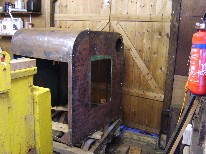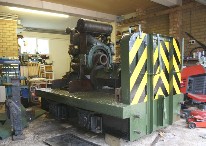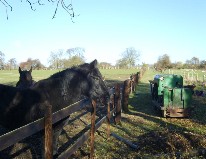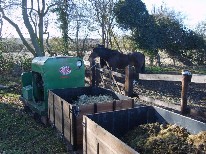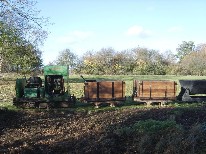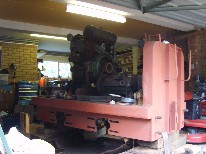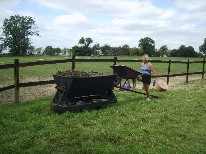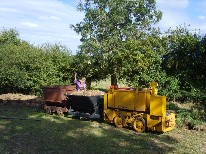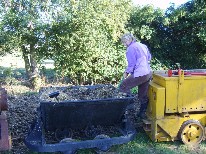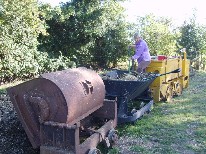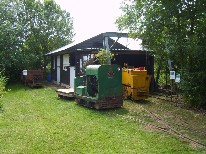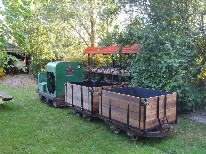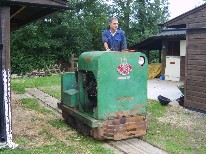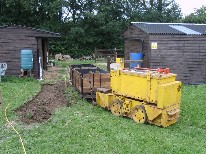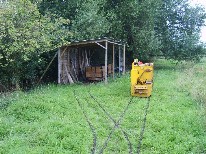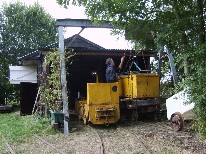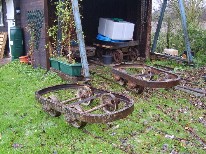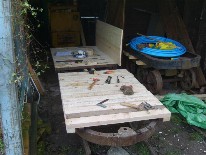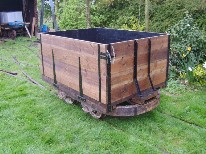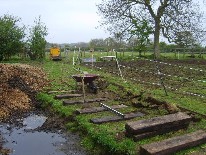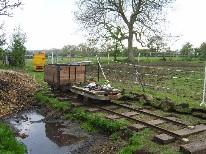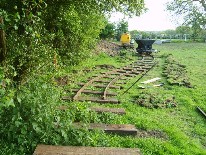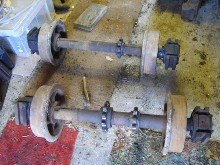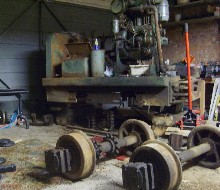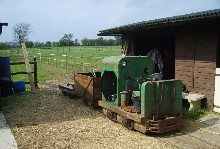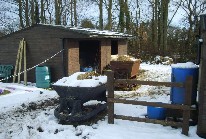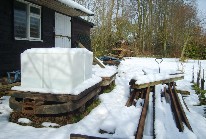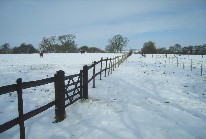|
The size of the manure pit had grown considerably over the winter with the horses overnighting in the stables. This increases the volume of waste, especially with the use of staw for bedding rather than wood chippings. The rails had only just reached the pit used for disposal, so further tracklaying was required, first along the edge of the pit.
|
Once the sleepers had been dug and levelled as usual, the next set of rails were spiked down. Fortunately as per much of the ground, the footing was quite firm with a hard clay soil, giving support to the sleepers and hopefully preventling any sinking of track.
|
The next couple of panels of rails required an 'S' bend to bring the alignment back to the edge of field, so some hard work was needed with the jimcrow rail bender. By early May this had been completed. A further panel will be laid to allow storage of stock at the end of line when needed just past the tipping point, but that will be as far at operationally needed at present.
|
